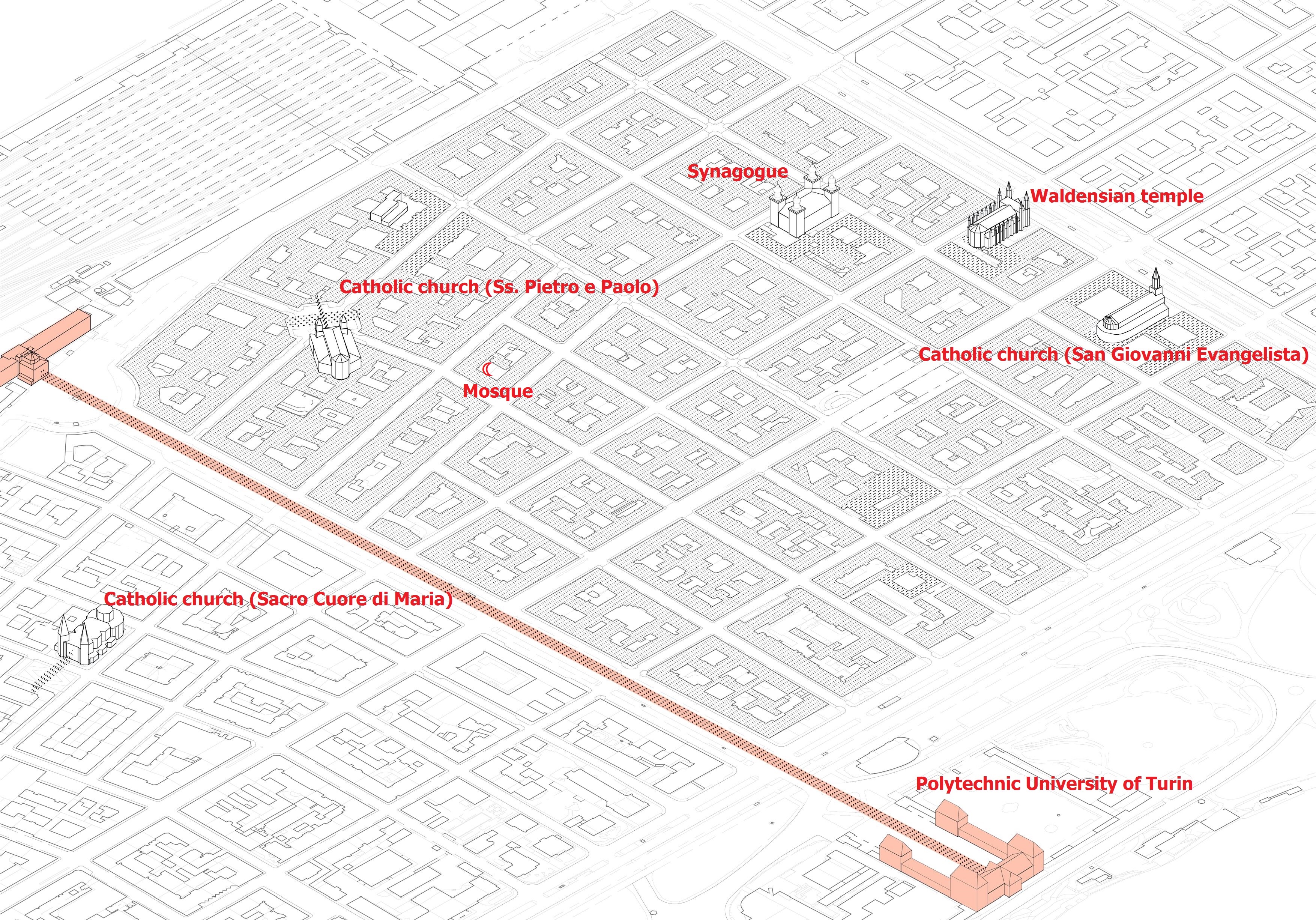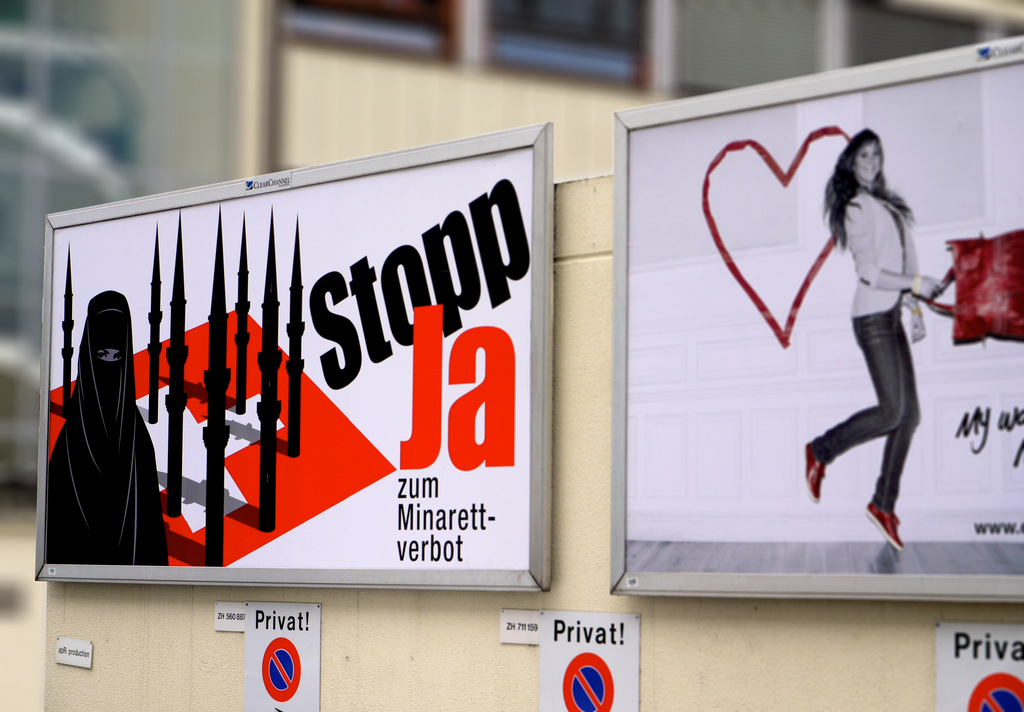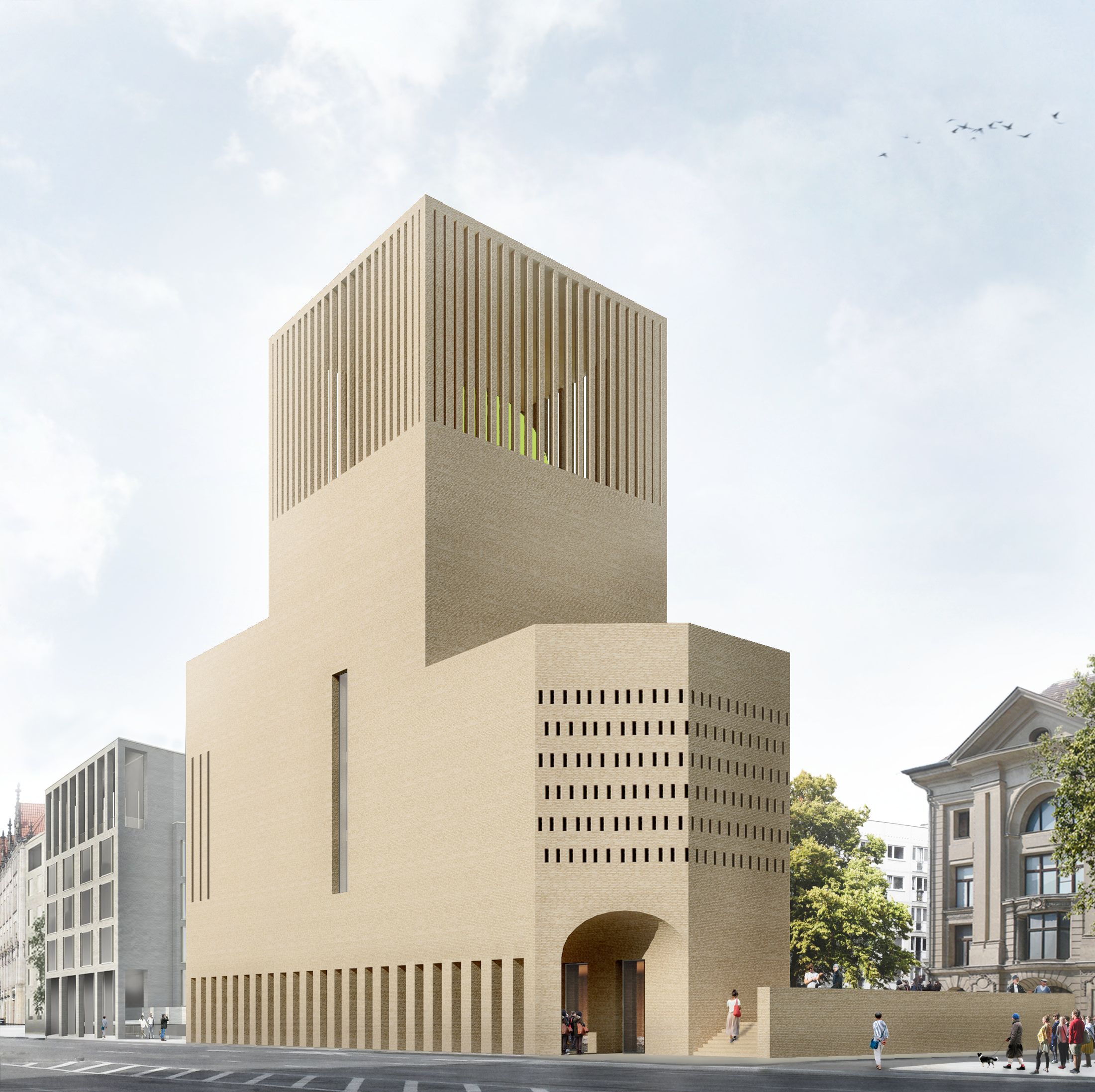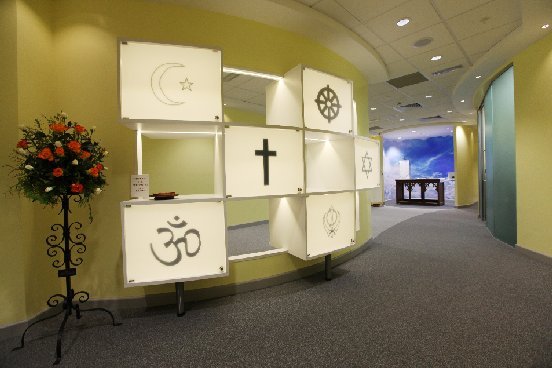2. Religions and urban space in the context of super-diverse European cities
The occupation of the quartier of San Salvario in Turin, Italy by different religious places (Synagogue, Mosque, Waldensian temple, Evangelical Temple, Catholic churches)

Turin, a city in the north of Italy, often considered an innovative laboratory for its political and social practices, especially towards migrants (since 50’s–60’s when migrants from south Italy moved to the north). The neighbourhood of San Salvario in Turin – a central, gentrificated, superdiverse neighbourhood – highlights the evolution of the public and social role of sacred buildings in a multicultural context starting from the mid Nineteenth Century. The slide (Campobenedetto/Giorda 2014) shows the occupation of the quartier by different religious places (Synagogue, Mosque, Waldensian temple (=Protestant), Evangelical Temple, Catholic churches). This system is composed of confessional blocks, which are poles with a community with supra-local dimension and by parish churches with a local dimension and a major role in the morphology of urban spaces hierarchy. In addition, there is a mosque that is well integrated in the social structure of Muslim community and has a supra-local dimension but is excluded from public space.
The result is a series of religious places which in the same area are able to establish a dialogue within the urban space, through a historicized set of symbols in the architectural form or in position within the urban space.
“Ja zum Minarettverbot" ("Yes" to the minarets ban) referendum campaign poster before the 2009 vote in Switzerland

All over the Western world, mosques and mosque-building plans are generating passionate arguments, particularly in local and municipal affairs. In many cities, both opponents and supporters of Muslim construction projects have realized that this issue engages voters far more than drains or libraries do.
On November 29, 2009, a clear majority of Swiss people (57.5%) voted ‘yes’ to a kind of referendum (formally speaking, a “people initiative”) proposing an absolute ban on the construction of new minarets in Switzerland. This decision has since generated widespread criticism, with various politicians, human rights associations, and international organisations (notably the United Nations and the Council of Europe) openly criticising the initiative and opposing its implementation. Switzerland is the only country in Europe to have so far legally banned minarets. Yet, this decision does not seem to be so exceptional when analysed against the ways European countries have recently reacted towards their foreign, and in particular Muslim, populations. In fact, we would argue that the Swiss episode reveals important shortcomings which today characterise many countries in Europe, and elsewhere, in their efforts to deal with the ethno-cultural transformation of their populaces.
Photography by Jenny Holzer – Zurich, 16 November 2009
Licensed under CC2.0
https://www.flickr.com/photos/rytc/4127391831/
The House of One project for Berlin: a church, synagogue and mosque in the same building

The project “House of One” will take place at Petriplatz in Berlin, Germany in the next years. Its aim is to provide a place of worship and contemplation for adherents of the world's three main monotheistic faiths, although the building will also be open to all. It will house a church, a synagogue and a mosque under one roof, but there will also be a large central area, in which members of the three faiths and others can meet. The idea was born in 2009, when archaeologists excavating some remnants of Berlin's earliest church, the Petrikirche. Gregor Hohberg, a Protestant pastor, initiated the project of a multicultural, multi-faith house on this place.
© KuehnMalvezzi
press materials from the
http://house-of-one.org/en/news-media/downloads/5
(24/07/2015)
The Gatwick airport multi-faith chapel

Retrieved from Gatwick airport chaplaincy website
http://gatwickairportchapel.org/t-welcome.htm
(24/07/2015)
This picture shows a recently built multi-faith prayer room in Gatwick airport near London. The first prayer rooms at airports did not have an interfaith character, they were sometimes multidenominational but purely Christian. With higher international mobility and growing migration, some of them were adapted and opened for followers of all faiths or new ones were opened in new airports. They are often named “Rooms of Silence”, or “Room for Silence and Prayer” like in Munich airport.
Airports and hospitals are privileged places for opening of multi-faith chapels. Often economic reasons are implied for their construction: to minimize costs of building and maintenance, but moral reasons also are alleged: these kinds of places are places of crossing between people (travellers or patients) who come from different countries or who have different cultural/religious backgrounds.






